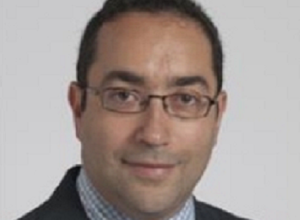
The Heart Rhythm Society has published a white paper looking at the consequences of oral anticoagulants for managing stroke risk in atrial fibrillation which suggests that success with left atrial appendage closure (LAAC) device implantation may represent a “turning point in medical practice”.
The paper, developed in association with Boston Scientific, is based on a roundtable discussion between multidisciplinary experts, with input from specialists in cardiology, neurology and emergency medicine, and a literature review of seven representative studies based on real-world medical claims databases. It analyses medical and pharmaceutical costs (direct and indirect) and benefits, looking at vitamin K antagonist (VKA) therapy and non-VKA oral anticoagulants (NOACs), as well as those associated with implantation of an LAAC device. Drug costs were evaluated per-patient-per-year (PPPY) and per-patient-per 10 years (PPP10Y), as treatment is needed for a patient’s lifetime. The white paper also looked at the consequences of oral anticoagulant (OAC) therapy for patients, including bleeding risk, quality of life factors, and issues around adherence.
The VKA warfarin has been shown to reduce the risk of ischaemic stroke, but carries a bleeding risk, and levels require constant monitoring using the INR [international normalised ratio] to ensure a therapeutic range is maintained. Warfarin therapy may also have a negative impact on quality of life, work, and family, as well as dietary restrictions on intake of vitamin K—all of which can lead to poor adherence. The paper points out: “Reported rates of discontinuation of warfarin therapy are often greater than for NOACs, though persistence is generally poor for both VKA and non-VKA medications.”
NOACs reduce the risk of ischaemic stroke as much or more than warfarin, and have a lower risk for some types of bleeding compared to warfarin, but many have an increased risk for gastrointestinal bleeding. In addition, there is no standard method to monitor maintenance of a therapeutic range with NOACs, making it difficult for physicians to assess compliance and protection from stroke risk.
The main source of stroke in non-valvular atrial fibrillation is due to the formation of thrombi in the left atrial appendage. Using an LAAC device may eliminate or reduce the negative consequences associated with OAC therapy by providing a permanent, non-pharmaceutical alternative for patients who are considered appropriate candidates for implantation. The Watchman Left Atrial Appendage Closure Device (Boston Scientific) is the most-studied LAAC device, and the only one currently approved for use in the USA.
The authors’ literature review found lower pharmacy costs with warfarin than with NOACs, but warfarin had the widest range and the highest upper value of total costs ($22,682–$58,284 PPPY, and $226,820–$582,840 PPP10Y) and medical costs ($19,815–$52,380 PPPY, and $198,150–$523,800 PPP10Y), which they say is likely due to the additional physician visits for INR monitoring. NOACs were generally similar in their ranges of medical, pharmacy, and total costs. A further potential cost often not considered is treatment with OAC reversal agents for OAC-related intracranial haemorrhage. The reversal agent for warfarin costs about $3,000–$5,000 per dose, and may need to be given repeatedly. Reversal agents for the various NOACs range from similar cost to about 10 times more per dose.
Data from real-world findings, say the authors, show a low complication rate with the Watchman device, and demonstrate that it is a safe alternative to long-term warfarin therapy, enabling >92% of patients to stop taking warfarin 45 days post-implantation, and >99% warfarin cessation after one year. The Watchman device also had comparable stroke event reduction to warfarin. The panel point out that complications with the Watchman device are mostly procedural and decrease over time as physicians gain more experience with implantation. However, bleeding complication rates associated with OAC therapy are fairly constant or can increase over time. They say: “The increasing favourable clinical and real-world outcomes with LAAC devices should be reassuring to physicians and may prompt a re-evaluation of their approach to reducing stroke risk in patients with non-valvular atrial fibrillation.”
The authors add that treatment should be based on an individualised approach that takes into account a patient’s medical and treatment history, lifestyle, occupation, quality of life, and personal preferences. Though OACs remain an important therapy, LAAC device implantation can be a better option for some patients based on consideration of individual factors.
Panel member and electrophysiologist Oussama Wazni (Cleveland Clinic, Cleveland, USA) told Cardiac Rhythm News: “Take into consideration not only the monetary cost of a pill, a test, or an appointment, but also what’s associated with taking an anticoagulant. We have a lot of patients now that we are taking care of because we need some alternatives to oral anticoagulation, namely left atrial appendage closure, and it’s striking that they come back and thank us, not because they’re not getting a stroke, not because they’re not bleeding, but because they don’t have to go back to the emergency room every other week or for a blood transfusion every couple of months. They are thanking us for other things that are associated with not taking an oral anticoagulant.”








